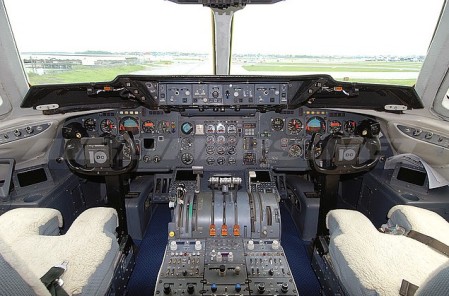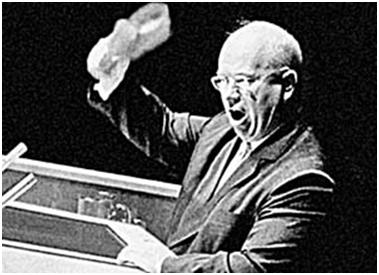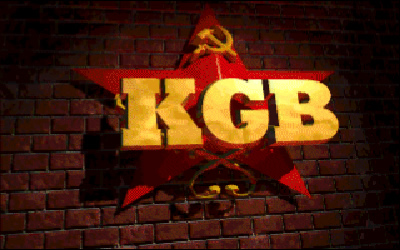Tales From The Flight Deck
 Back in the day, you’d slide that DC-10 electric seat forward in the copilot’s position and hunker down for the long haul: 9 hours from DFW to Paris on a good day with favorable winds. But more than flight time or miles or fuel flow and track routing, pacing was the order of the day: you’re going to be sitting here all night–don’t be in any rush to do anything.
Back in the day, you’d slide that DC-10 electric seat forward in the copilot’s position and hunker down for the long haul: 9 hours from DFW to Paris on a good day with favorable winds. But more than flight time or miles or fuel flow and track routing, pacing was the order of the day: you’re going to be sitting here all night–don’t be in any rush to do anything.
That was over twenty years ago–closer to twenty-five. And the captains in those days had at least that many years with the airline in order to have advanced seniority-wise into the widebody left seat ranks, rarified air in any airline. So we’re talking what–a half century into the past, into the flight memories and aviation lore to be shared in the cold, dark, midnight sky over Greenland and the Atlantic?
Always liked flying with Bob C., now deceased, but who in those long hours at altitude would relate memories of flying wing for Iven Kincheloe over the Yalu River during the Korean War. Barely hanging onto his wing, trying not to get killed . . . he was a madman . . .
 But tonight’s story hour would come from a different source. Dick B. had flown Super Connies for TWA before quiting to take a job with my airline when I was still in pre-school. “A better deal,” he’d always say, “although flying plumber on the Connie was a heck of an education.”
But tonight’s story hour would come from a different source. Dick B. had flown Super Connies for TWA before quiting to take a job with my airline when I was still in pre-school. “A better deal,” he’d always say, “although flying plumber on the Connie was a heck of an education.”
Plumber. Or, in more correct parlance, flight engineer. Back in the fifties, he’d say, the airline biz was a whole ‘nother animal. Of course, we all still say that: when were you hired? Ninety-one? Well, all through the eighties this airline was a blast . . .
Still, even with a grain of salt or two, the Kinchloe or Connie stories were a welcome relief from the doldrums of midnight cruise across the pond.
Tonight Dick was holding forth about the early Connie days, back when the Cold War was heating up; the days when a lot of guys like Bob were just out of the Air Force after the post-Korean War draw down. Guys like Dick had never served, so he’s been able to spend his early years on the engineer’s panel instead of hanging onto Iven Kinchloe’s wing for dear life.

Those were the days of Kruschev bellowing about the demise of democracy, and Sputnik, and the nuclear standoff. In the midst of it all, both countries at least made a show of diplomacy. That’s where Dick came in.
Besides the well-known “red phone” from the Kremlin to the White House, other lesser gestures intended to defuse the Cold War took place as well.
 Aeroflot would be allowed one flight a day into “Idlewilde Field”–later renamed Kennedy International–in New York City, and one U.S. carrier would be granted a landing slot in Moscow. A small but meaningful attempt at detente. The U.S. flag carrier granted this Moscow route was, of course, TWA; and the aircraft making the maiden flight was the Super Constellation. On board was one very young, excited flight engineer named Dick.
Aeroflot would be allowed one flight a day into “Idlewilde Field”–later renamed Kennedy International–in New York City, and one U.S. carrier would be granted a landing slot in Moscow. A small but meaningful attempt at detente. The U.S. flag carrier granted this Moscow route was, of course, TWA; and the aircraft making the maiden flight was the Super Constellation. On board was one very young, excited flight engineer named Dick.
It was common knowledge that the Aeroflot aircraft would be packed to the gills with spying equipment like cameras and other electronic data gathering devices. Maybe that’s why Kennedy was chosen as the landing base by the U.S. State Department: nothing to overfly, no way to take spy photos out there in the Long Island hinterlands.

But in the spy vs. spy paranoia of the Cold War, the Connie crew just knew they’d be spied on once they landed in Russia. So, Dick told us, when the crew reached their layover hotel in Moscow, they made a pact: they’d all search their rooms for the listening devices and spying equipment they knew had to be there. Dick tore apart his room and found nothing–but in short order, his phone rang: the lead flight attendant had found a mysterious metal canister under her bed. Aha. Be right down with my tools.
The good flight engineer grabbed his tool bag and hustled to the flight attendant’s room, already packed with the captain and the rest of the crew, with the bed shoved aside, mysterious, gleaming canister in the center of the floor.
Carefully, using a crescent wrench adjusted for the odd caliber of the nuts on the bolts ringing the canisters, the engineer removed each bolt carefully. Suspense built with the last bolt . . . deep breath, lift the canister . . .
Nothing.
But within minutes, there was an angry voice at the door, fists pounding, and footsteps rushing down the hall and towards the room. The crew prepared for the worst.
 Instead, it was the maitre d, enraged, plus the hotel manager. As it turned out, the flight attendant’s room was above the main dining room. Instead of disabling a sinister spy device, the crew had unwittingly removed the anchor plate for the chandelier in the dining room.
Instead, it was the maitre d, enraged, plus the hotel manager. As it turned out, the flight attendant’s room was above the main dining room. Instead of disabling a sinister spy device, the crew had unwittingly removed the anchor plate for the chandelier in the dining room.
Oops. maybe Kruschev was right–maybe Americans were the real crazies, despite the world famous pictures of him pounding the podium with his own shoe at a televised news conference. And my question, though I didn’t ask, is whether the red phone on Eisenhower’s desk rang shortly afterward, with a demand for payment for one smashed chandelier and maybe a buffet line.
But those days, and those pilots, are now long gone. Now, in the left seat, it’s pilots like me remembering them, but also our own early days with the airline and the adventures that span thousands of air miles.
And when it gets dark, and quiet, and dull on the flight deck at 41,000 feet a thousand miles from anywhere, it’s time.
Did I ever tell you about that time in London when the police picked up the entire crew walking down the middle of the street at 3am?
And so it goes . . .

April 23, 2013 at 10:35 am
Thanks Christo, loved the chandelier story.
April 23, 2013 at 10:40 am
How about the time the two-star’s wife caught the flight crew using the bathtub in the general’s VIP suite as a urinal?
I always figured it was their own fault for serving beer and inviting the crew.
April 23, 2013 at 10:45 am
Chris, you be right, “the good ole daze”!
Don’t be forgettin’ the BS sessions with the American Airline’s crews and us at the (overnight hotel) Nikko in Paris while we were waiting for our rooms after the trip.
Also, you made me think of my B-I-L telling me about flying F-86 wingman for (deleted, he was an ace) in Korea, “don’t ever get ahead of him, he can’t see very well and is likely to shoot at you”.
Best, Randy Sohn
April 23, 2013 at 11:06 am
Now that’s a pretty dang funny flying story.
Many of them swapped too over brandy-spiked tea in the lobby of the “Post Hole” hotel near London-Gatwick, waiting for rooms after flying all night. A decent nap then hop on the train to Victoria Station; pub-grub and ale …
April 23, 2013 at 4:56 pm
A fun post, Chris. Thanks. -C.
April 23, 2013 at 6:09 pm
Thanks for a great and entertaining story! I knew an old Connie pilot the talked about St. Elmo’s fire going nose to tail.
April 23, 2013 at 6:13 pm
My dad flew Connies and said the same thing: balls of St. Elmo’s rolling down the aisle bow to stern. He also talked about the props shedding ice, flinging it against the fuselage. Must have been a different world, cruising around between 15,000 and 20,000.
April 24, 2013 at 12:39 am
[…] engineer, kgb, midnight sky, super connie. You can follow any responses to this entry through the RSS 2.0 feed. You can leave a response, or trackback from your own […]
April 24, 2013 at 5:31 am
Reblogged this on robert's space and commented:
damn i’m going to have avert more flight simulater and check the shops.
April 25, 2013 at 12:31 am
When flying Idlewild-Gander-Shannon-Frankfurt in ’51 as a very impressionable 4-year old, all I can remember is being overwhelmed and fascinated by the Connie. I’d never even been to an airport before then.
Flying back in ’54 the fascination was more so; was allowed to stand behind the pilots’ seats for a brief look out (at nothing but sky – all sky, so looked for compass and the rest). That gets a “Wow” then and now.
April 27, 2013 at 7:50 pm
Mike and I love the chandelier tale…so funny!!! Thanks, Chris. 🙂
August 26, 2013 at 2:13 am
Excellent! I got a chuckle over the chandelier story!
August 26, 2013 at 10:06 pm
Flying NE and SW through Utah, Idaho, Montana and Colorado in a little two-holer, I think I had more fun but less money. My airline, now gone, was truly
“the only way to fly!”
August 26, 2013 at 11:06 pm
You look at radial piston engines during that time – developed about as far as they could go – and I am amazed they didn’t have more in-flight failures.
And think of the seat time.
Knew a retired pilot who flew Braniff from Dallas to Quito regularly – ended up getting Phlebitis
But I don’t think there has been a more beautiful airliner than the Connie.
That era you speak of Chris – the late great Len Morgan wrote a column in Flying years ago on how glamorous flying used to be – when passengers would dress up – I guess that started changing in the 60s.
BTW laughed out loud at the source for the mysterious object.
August 28, 2013 at 12:56 pm
[…] the solving of Busbob’s Connie Mystery (in which I was 0-2) here is a Connie tale from the Cold War, from Jethead’s […]